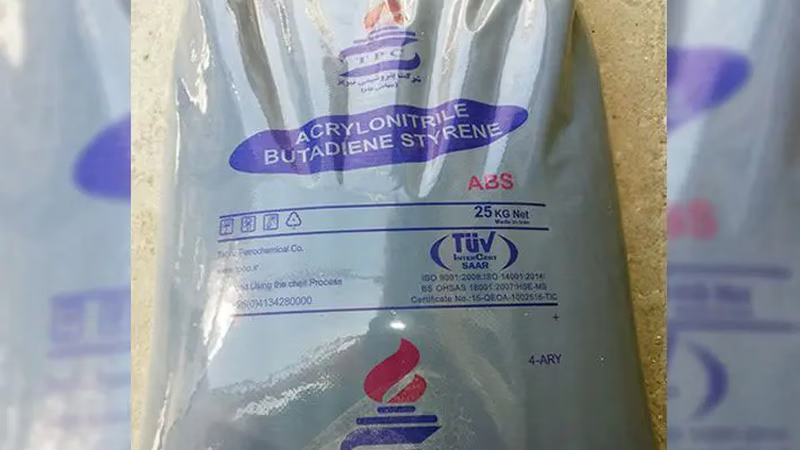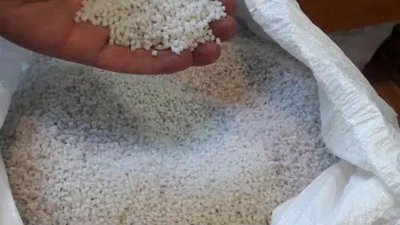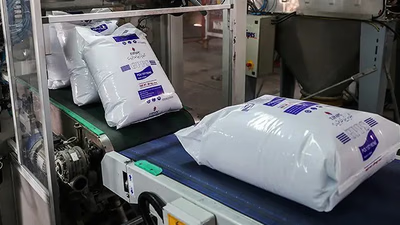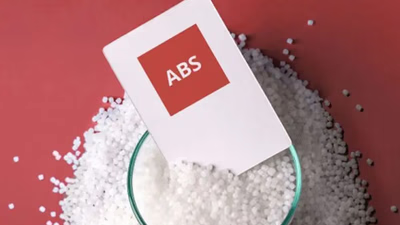
ABS polymer used in automotive and consumer goods applications.
ABS is extensively used in the automotive industry for injection-molded components. It is used for manufacturing interior parts like dashboard panels, door trims, center consoles, and instrument clusters. Exterior parts such as grilles, bumper covers, mirror housings, and wheel covers are also commonly made from ABS. ABS is widely used for injection-molded enclosures for electronic and electrical devices. It is used for housing components like computer and laptop casings, TV and audio equipment enclosures, control panels, and various consumer electronics.
Increasing applications of ABS have led to the development of other alloys to address its shortcomings. MBS is one of the alloys that has advantages over ABS such as high transparency and better resistance to sunlight. But this alloy has less tensile strength compared to ABS. The butadiene in the oxidized surface dissolves and the small cavities left on its surface are chemically active. These points will be a good place for chemical deposition of copper or nickel as well as catalyst adsorption. In addition, the presence of these cavities will increase the mechanical adhesion of the plating layer to the plastic.
ABS is employed in various consumer goods that undergo plastic injection molding. This includes items like cosmetic packaging, kitchenware, household tools, and office supplies. ABS's ability to be easily molded into intricate shapes and its aesthetic appeal make it suitable for these applications.
The application of ABS polymer in plastic injection is very wide. Many of the parts produced during the injection process are made of ABS. The production of protective coatings, computer components such as mouse and keyboard bodies, as well as holding containers are among the applications of this inexpensive polymer in the plastic injection industry. The affordable price of this polymer is the first reason for its use in the plastic injection industry. On the other hand, the styrene in this polymer gives a clear and shiny state to the final product, which along with the hardness and resistance caused by polybutadiene, will create a very ideal shape.
The structural diversity of this polymer gives rise to several properties in this material that allow manufacturers to use it to make products with different shapes and uses. On the other hand, this material is available in various quality grades and can be transparent, glass or have excellent resistance. In the plastic injection process, different raw materials are used to make plastic products. These raw materials, which are mostly thermoplastic polymers, can form a wide range of consumer and industrial products used in today's world.
ABS is utilized in the injection molding of appliance components such as refrigerator liners, washing machine and dryer parts, vacuum cleaner housings, and control panels. Its durability, impact resistance, and resistance to heat and chemicals make it suitable for these applications. ABS is a popular choice for injection-molded toys and recreational products. It is used for manufacturing building blocks, action figures, puzzles, model kits, toy vehicles, sporting goods, and many other plastic toys. ABS is used in the injection molding of certain medical devices and equipment. It is suitable for applications that require good impact resistance, chemical resistance, and ease of sterilization. Examples include medical equipment housings, cases, and disposable components.
-

ABS polymer is widely utilized in the automotive sector for injection-molded components, including interior and exterior parts like dashboard panels and bumper covers. Its applications extend to electronic enclosures, consumer goods, and various household items due to its moldability and aesthetic appeal. The affordability of ABS makes it a preferred choice in the plastic injection industry. Additionally, ABS"s structural diversity allows for various properties, enabling manufacturers to create products with different shapes and uses. The polymer is also employed in appliance components, toys, recreational products, and certain medical devices due to its durability, impact resistance, and chemical resistance. Innovations such as MBS alloy have emerged to enhance ABS"s properties, offering alternatives with high transparency but lower tensile strength. Overall, ABS remains a versatile material in plastic injection molding across multiple industries.
-

Asia"s abundant reserves of acrylonitrile, butadiene, and styrene make it a prime location for ABS polymer production. Countries like South Korea, Taiwan, and Japan have advanced petrochemical industries supported by significant investments in infrastructure and technology. Major producers such as LG Chem, Chi Mei Corporation, and Formosa Plastics Corporation leverage their proximity to raw materials and major markets to reduce costs and enhance delivery efficiency. The region"s favorable policies promote growth in the petrochemical sector, further boosting ABS production capabilities. In the Middle East, companies like Tabriz Petrochemical and Ghaed-Basir Petrochemical also contribute to ABS manufacturing. The demand for ABS is rising due to rapid industrialization across Asia, with applications spanning automotive, electronics, and construction sectors. Competitive pricing is achieved through lower labor costs and efficient supply chain management. However, challenges such as recycling contamination need addressing to maintain quality in recycled ABS products.
-

ABS plastic is valued for its mechanical properties, including toughness, impact resistance, and rigidity, making it ideal for various industrial applications. Its thermal stability allows it to maintain performance under temperature fluctuations, while its chemical resistance enables use in environments with exposure to acids and oils. ABS is widely utilized in the automotive sector for components like dashboards and bumpers due to its durability and moldability. In consumer electronics, it serves as a material for housings and connectors. Additionally, ABS is popular in 3D printing for creating prototypes and functional parts. Despite some disadvantages such as flame sensitivity and opacity, these can be mitigated through alloying with other materials. The ease of processing ABS through methods like injection molding enhances its appeal across industries, including household appliances and construction. Its versatility allows customization to meet specific application needs.
-

Acrylonitrile Butadiene Styrene (ABS) is a widely used thermoplastic polymer known for its toughness, impact resistance, and dimensional stability. Composed of acrylonitrile, butadiene, and styrene, ABS combines the strengths of these monomers to create a versatile material suitable for various industries. Its properties include chemical resistance, heat resistance, and hardness from acrylonitrile; impact resistance from butadiene; and rigidity from styrene. ABS is prevalent in consumer electronics like keyboards and phone cases, as well as in automotive parts, household appliances, and construction materials. The polymer"s machinability allows for precise component production through conventional methods such as cutting and drilling. ABS is also cost-effective compared to other engineering thermoplastics and offers good electrical insulation properties. However, it may not be suitable for all applications due to its limited chemical resistance and potential degradation under prolonged sunlight or high temperatures. Therefore, careful consideration of application requirements is essential when selecting ABS. "
-

ABS polymer offers significant advantages for plastic injection molding, including excellent impact resistance, ease of processing, and good flow properties. Its versatility allows for modifications to enhance specific characteristics, making it suitable for various applications. ABS provides a smooth surface finish, reducing the need for additional finishing processes. It also exhibits good chemical resistance, making it ideal for environments where contact with different substances is common. However, ABS has notable disadvantages such as a low melting point, which limits its use in high-temperature applications like medical implants. Its resistance to corrosion and UV rays is also low, leading to potential degradation over time when exposed to sunlight or harsh conditions. Additionally, ABS can warp during cooling and has moderate shrinkage that requires careful design considerations during production. Despite these drawbacks, the material"s ductility and affordability contribute to its popularity in producing everyday plastic products. "





